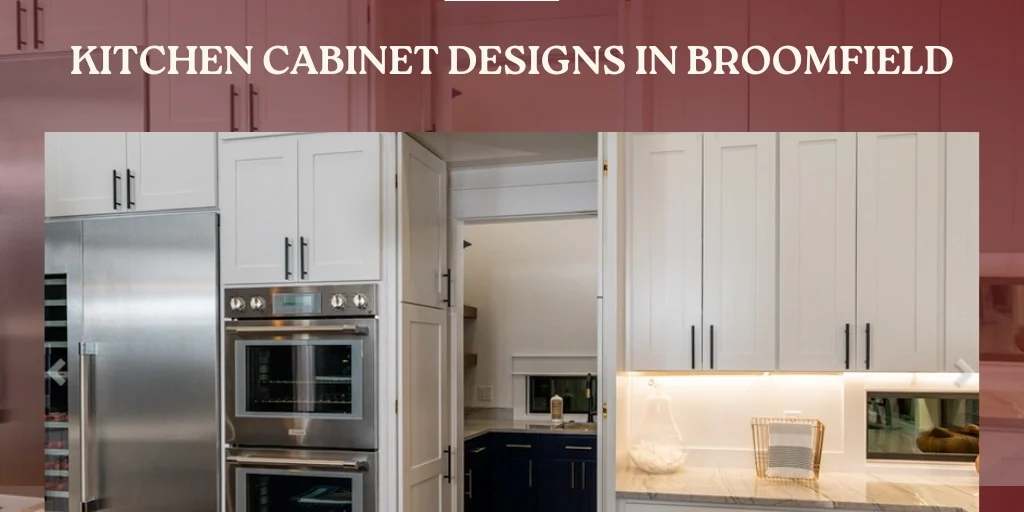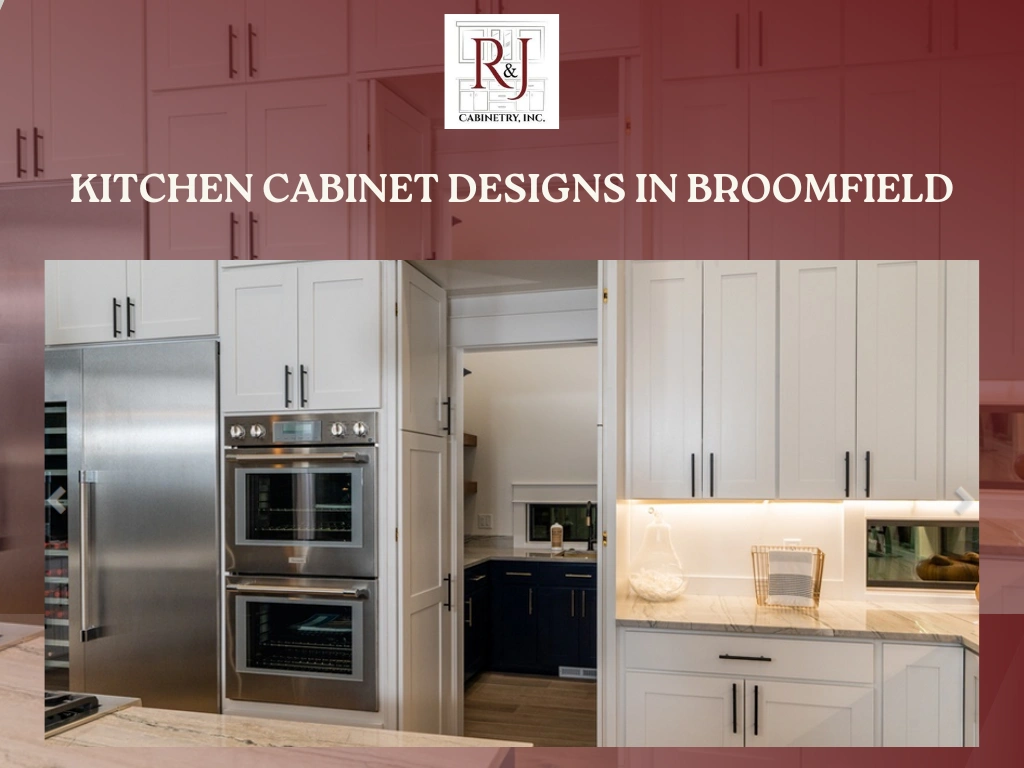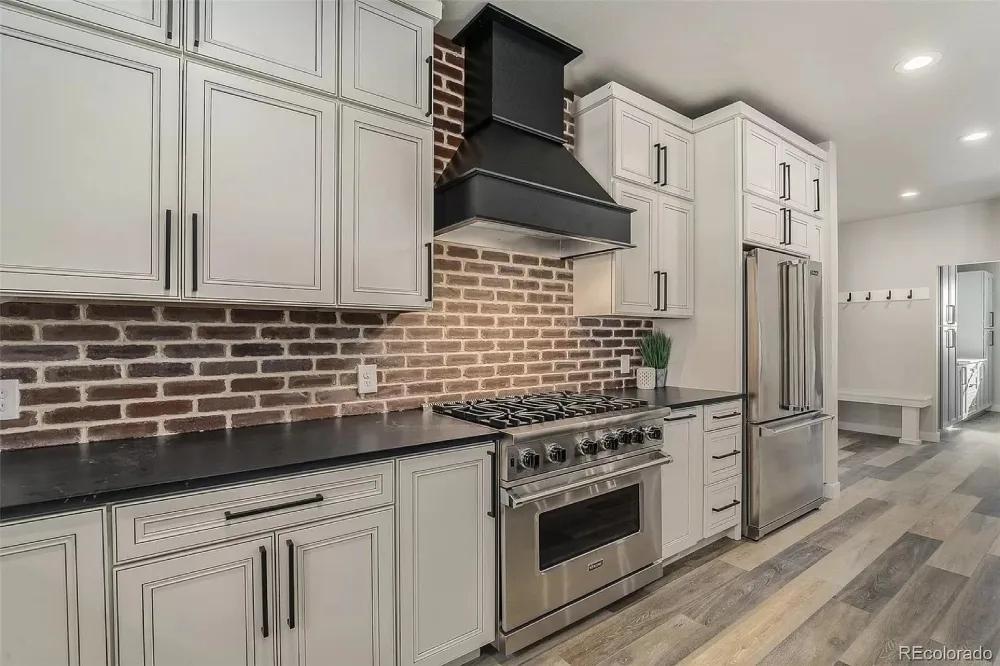Ever feel like your home could use a bit more storage, but you want it to actually fit your space? Built-in cabinets might be just the thing. Whether it’s for the kitchen, living room, or that awkward hallway corner, they offer a clean and seamless way to stay organized without throwing off your home’s style.
But before you start browsing kitchen cabinet designs in Broomfield or searching for a kitchen cabinet showroom near me, there are a few important questions you should be ready to answer. These questions not only help guide the design process but also ensure your contractor can give you an accurate quote.
Let’s walk through what you’ll need to know and why it matters.
-
Know Your Measurements
Why size matters.
Start by measuring the space where your built-in will go. Height, width, and depth are critical. These numbers are the foundation of your design. If the cabinet is too deep, it may intrude into your living space. Too shallow, and you won’t get enough storage.
Tip: Even if you plan to have a professional come measure later, it helps to have a rough idea ready. This makes your initial consultation more productive and gets the conversation moving faster.
-
Crown Molding or No Crown Molding?
This isn’t just about decoration—it’s about finish.
Do you want crown molding along the top of your built-in cabinet? It’s a small detail that makes a big difference. Crown molding can help the piece look integrated with the rest of the room, especially in homes with existing trim.
You’ll also need to consider:
- Traditional vs. contemporary molding
- Whether it matches existing baseboards or ceiling trim
If your home has modern lines, you might want a minimal or no-molding look. On the other hand, in more classic interiors, crown molding brings a sense of cohesion and polish.
-
Open Shelves, Doors, or Both?
Think about how you’ll use the cabinet.
Will you store items that you want on display? Or do you need to hide clutter behind doors? Your answer affects not only the layout but also the overall look and cost.
- All open shelves: Great for books, plants, or decorative objects
- All doors: Perfect for a cleaner, more minimalist feel
- Combination: Offers flexibility and the best of both worlds
This decision also helps determine hardware needs, hinges, and internal shelf configurations.
-
Painted or Stained Finish?
This decision shapes the cabinet’s personality.
Painted cabinets are versatile and can lean more casual or upscale depending on the color and finish. White or soft gray paints are timeless, but bold colors like navy or black are rising in popularity.
Stained cabinets show off the natural wood grain and give your space warmth and texture. If you prefer stain, you’ll also need to choose a wood species.
Popular options include:
- Oak: pronounced grain, traditional look
- Maple: smooth grain, more modern
- Walnut: rich, dark tones
- Alder: slightly rustic, budget-friendly
Some kitchen cabinetry designs in Broomfield favor stained wood for its durability and depth, especially in homes with open floor plans or earthy design elements.
-
Budget: The Starting Line, Not the Limit
Be upfront about your price range.
Here’s where a lot of people get stuck: they don’t want to share a budget too early. But in reality, your contractor can’t guide you toward the right materials, finishes, or cabinet line without knowing your target number.
A built-in can range widely in price depending on materials, complexity, and size. For example:
- Around $3,000 might get you a standard cabinet line with basic features and a painted finish
- Around $6,000 might include higher-end wood, detailed molding, and a more custom look
Be honest about your expectations and how long you plan to stay in your home. If this is your forever home, investing in higher-end kitchen cabinet designs in Broomfield may be worth it. If it’s a stepping stone, something simpler and budget-conscious might make more sense.
-
Quality vs. Cost: Understand What You’re Paying For
Not all cabinets are built the same.
If you’ve visited a kitchen cabinet showroom lately, you’ve probably seen the range in quality. Two cabinets can look nearly identical on the outside but have very different builds underneath.
Higher-end cabinets often come with:
- Soft-close hinges and drawer slides
- Dovetail joints
- Solid wood construction (not MDF)
- Custom sizing
- Stain-resistant finishes
Lower-cost options might use veneer or laminate and may not hold up as long over time. It’s all about finding the right balance between your budget and the durability you need.
-
Think Beyond the Cabinet
How will this cabinet impact your room overall?
Built-ins aren’t just cabinets; they become part of the architecture of your home. Think about:
- How it will flow with nearby furniture
- Whether it blocks vents, outlets, or windows
- How you’ll use it day to day
If it’s going in the kitchen, will it complement your existing kitchen cabinetry designs in Broomfield? If it’s for your living room, will it leave enough space for seating or artwork?
It helps to visualize the whole scene, not just the cabinet but everything around it. Some people sketch it out or use painter’s tape to outline the dimensions directly on the wall or floor.
-
Don’t Be Afraid to Talk Through Kitchen Cabinet Designs in Broomfield
This is a collaborative process.
Your contractor doesn’t expect you to have all the answers right away. In fact, the best results come from open dialogue. Some clients follow up with details via email, while others prefer a quick phone call. Either way, being responsive and clear helps keep your project on track.
It also allows your contractor to recommend the right cabinet line, materials, and layout that not only look great but also suit your lifestyle.
Planning Without the Overwhelm
Planning a built-in cabinet can feel like a lot, but it doesn’t have to be overwhelming. When you come prepared with answers (or at least thoughts) on size, style, budget, and finish, you get better advice, clearer quotes, and a design that truly fits your home.
Start by measuring your space and thinking through how you’ll use the cabinet. Explore kitchen cabinet designs to gather ideas, and be open with your contractor about your goals and budget. That ongoing conversation is what helps turn an ordinary cabinet into something that works just right for your home.
FAQs
Q: Where’s the best spot in my home for a built-in cabinet?
A: That depends on how you plan to use it. A living room built-in might work well for media storage or display. In a bedroom, it could double as a wardrobe or window seat. Your space, habits, and storage needs will point you in the right direction.
Q: Can I use built-ins in small rooms?
A: Absolutely. Built-ins are actually great for maximizing tight spaces. Think floating shelves, wall-to-wall cabinets, or even shallow built-ins that don’t take up much floor space but still keep clutter out of sight.
Q: How deep should built-in kitchen cabinets be?
A: It depends on what you plan to store. Upper cabinets are typically around 12 inches deep, which works well for dishes and pantry items. Base cabinets usually range from 24 to 30 inches deep to accommodate pots, pans, and small appliances. If you’re adding specialty storage like pull-outs or built-in organizers, your designer may recommend custom depths to suit your layout and needs.
Know What You Want? R&J Cabinetry Can Quote It Accurately
Built-ins aren’t something you want to guess your way through. At R&J Cabinetry, we walk you through every question with clarity, professionalism, and honest insight, just like we did with the email that inspired this blog. Whether you’re exploring kitchen cabinet designs in Broomfield, weighing finish options, or figuring out what fits your space best, we’re here to guide you.
Contact us directly to start the conversation. We’ll help you narrow down your ideas, finalize your measurements, and lock in a design that works for your home and budget. No surprises. Just straightforward answers and solutions that make sense.







